Boundstone
1. Framestone
Coral boundstone (framestone) with massive coral colony encrusted by serpulids forming a rigid framework surrounded by marine cement.
High Atlas, Morocco, cf. Merino-Tome' et al. (2012), Della Porta et al. (2013)

HIDE INFO

SHOW INFO
2. Framestone
Coral boundstone (framestone) with branching phaceloid coral colony forming a rigid framework surrounded by micrite crusts.
High Atlas, Morocco, cf. Merino-Tome' et al. (2012), Della Porta et al. (2013)

HIDE INFO

SHOW INFO
3. Bafflestone
Algal boundstone with in situ vertically growing organisms baffling sediment (beresellid algae).
Pennsylvanian, Asturias, N Spain, cf. Bahamonde et al. (2015, 2017)

HIDE INFO

SHOW INFO
4. Bindstone
Algal boundstone with encrusting binding organisms such as coralline red algae.
Thin section kindly provided by T. Geel, Vrije Universiteit, Amsterdam

HIDE INFO

SHOW INFO
5. Microbial boundstone
Laminated clotted peloidal micrite and microsparite microbial boundstone (stromatolite) with peloids less than 60 microns formed by precipitation from an aquatic solution by possibly biologically induced/influenced precipitation processes in microbial biofilms and degrading organic matter.
Permian, New Mexico, USA

HIDE INFO

SHOW INFO
6. Microbial boundstone
Clotted peloidal micrite and microsparite boundstone with peloids (less than 60 microns in size) precipitated from marine water due to likely biologically induced/influenced processes; primary framework cavities filled by radiaxial fibrous cement.
Pennsylvanian, Asturias, N Spain, cf. Bahamonde et al. (2015, 2017)

HIDE INFO

SHOW INFO
7. Microbial boundstone
Clotted peloidal micrite and microsparite boundstone with peloids (less than 60 microns in size) precipitated from marine water due to likely biologically induced/influenced processes; cavities sustained by peloidal micrite filled by radial fibrous cement.
Pennsylvanian, Asturias, N Spain, cf. Bahamonde et al. (2015, 2017)

HIDE INFO

SHOW INFO
8. Microbial boundstone
Clotted peloidal micrite and microsparite boundstone with peloids (less than 60 microns in size) precipitated from marine water, sustaining a framework consisting of phylloid algae and cavities filled by radiaxial fibrous cement.
Pennsylvanian, Asturias, N Spain, cf. Bahamonde et al. (2015, 2017)

HIDE INFO

SHOW INFO
9. Microbial boundstone
Clotted peloidal to structureless micrite (leiolitic) boundstone including bryozoans.
Pennsylvanian, Asturias, N Spain, cf. Bahamonde et al. (2015, 2017)

HIDE INFO

SHOW INFO
10. Microbial boundstone
Homogeneous structureless (leiolitic) to clotted peloidal micrite (microbial boundstone) sustaining primary voids and including a fenestellid bryozoan. This texture is characteristic of Tournaisian middle ramp Waulsortian mounds.
Mississippian, Ireland

HIDE INFO

SHOW INFO
11. Microbial boundstone and cementstone
Clotted peloidal micrite crusts separating hemispherical marine cement structures. Diagenetic texture non obliterative dominated by cement spar (neomorphic on early marine botryoidal aragonite) and peloidal micrite.
Permian, West Texas, USA

HIDE INFO

SHOW INFO
12. Biocementstone
Boundstone formed by in situ organisms forming skeletal scaffolding (bryozoans) and early marine radial/radiaxial fibrous cement > 50%.
Mississippian, Ireland

HIDE INFO

SHOW INFO

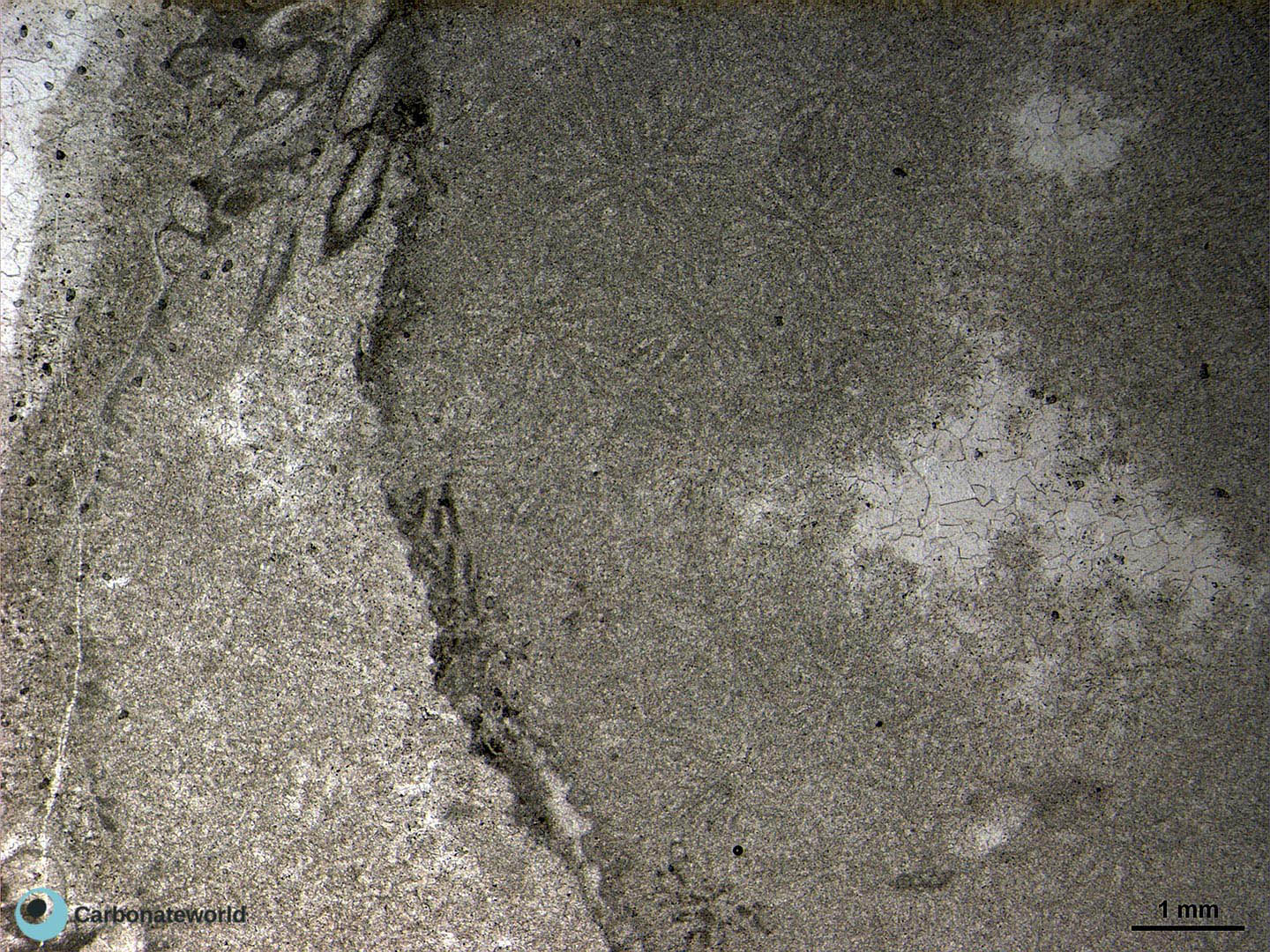

Coral colony

Radial fibrous cement

Serpulid
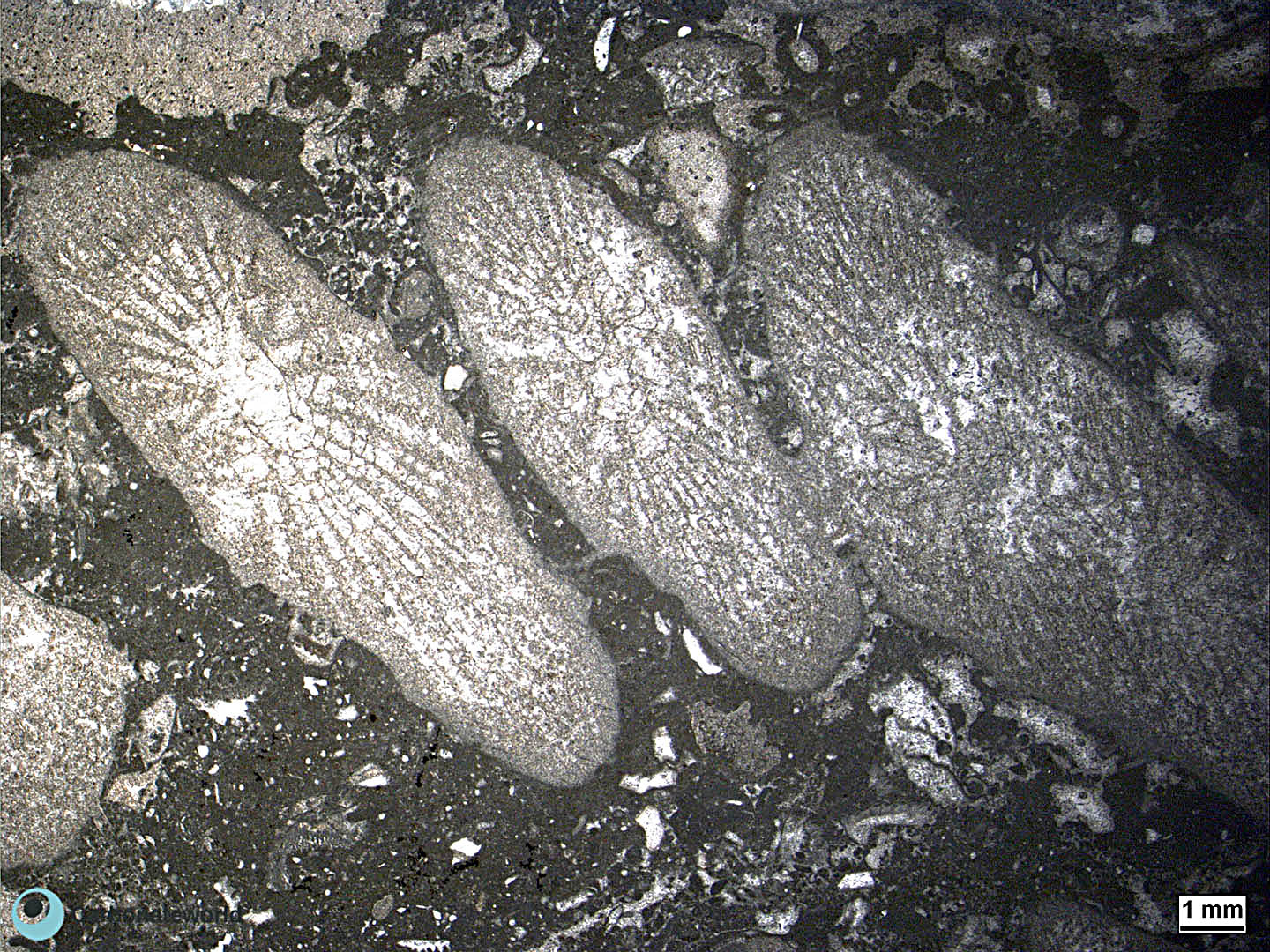

Phaceloid corallite

Micrite crusts
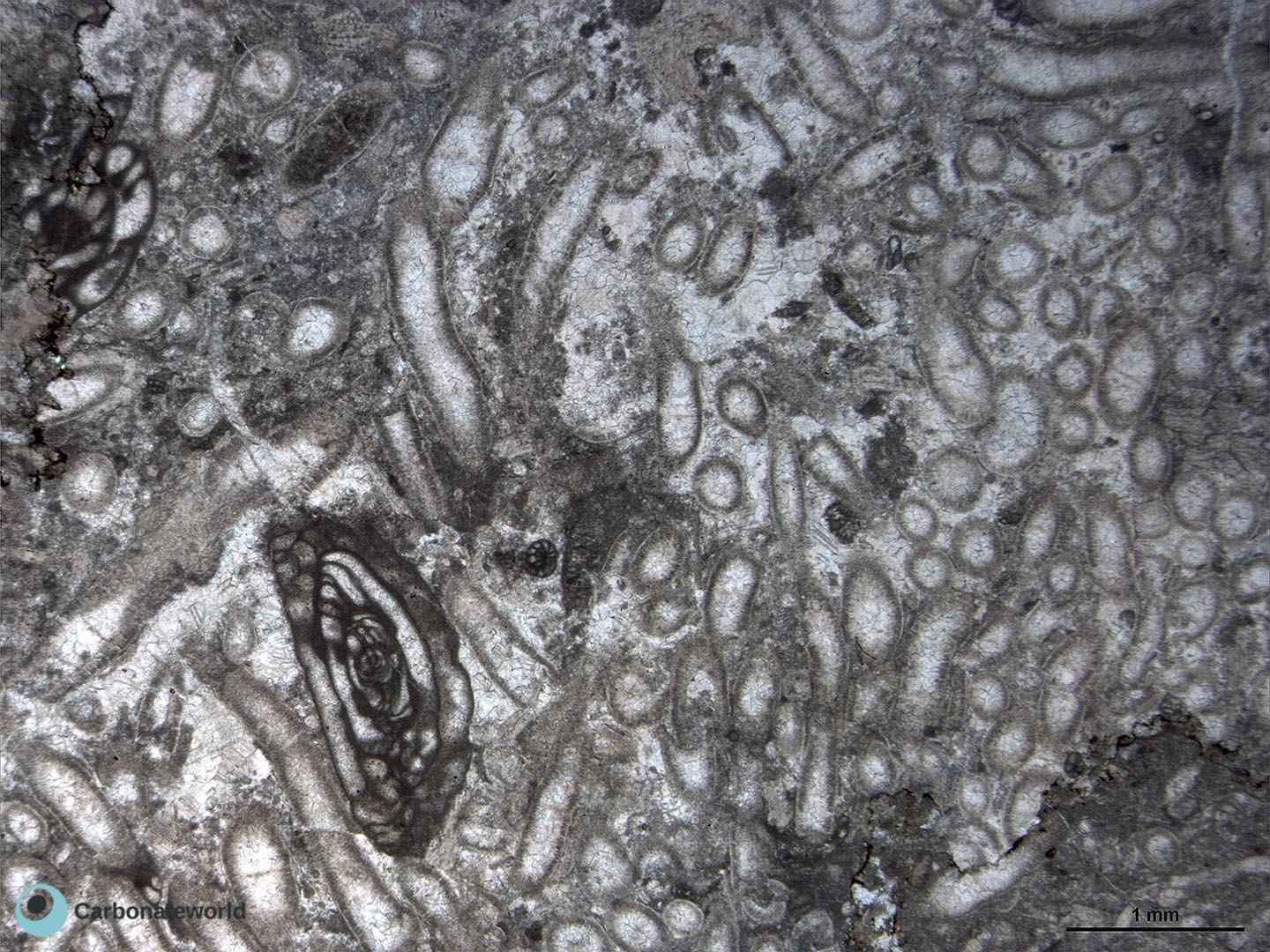

Beresellid algae

Fusulinid foraminifer
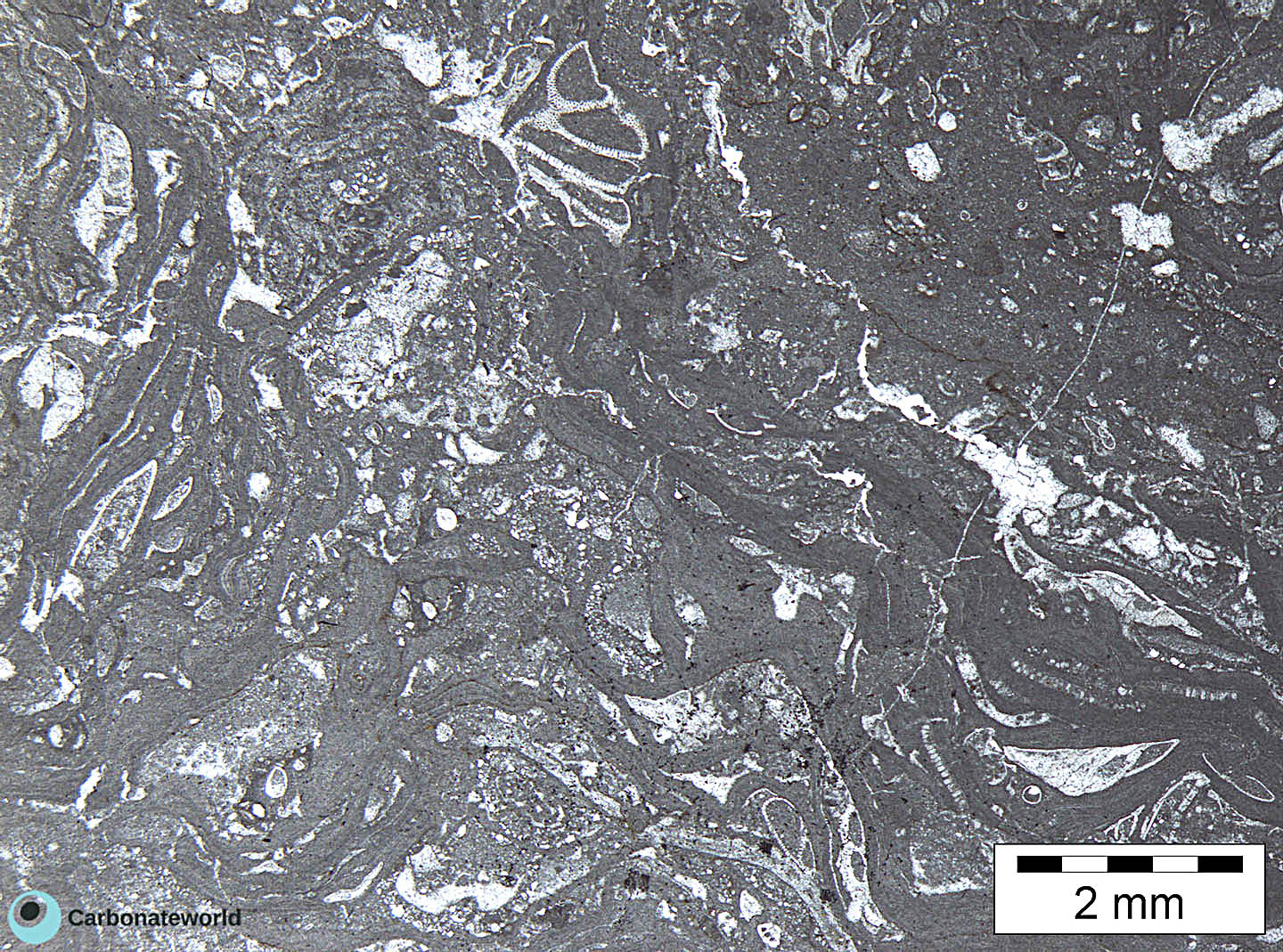

Red alga Lithophyllum
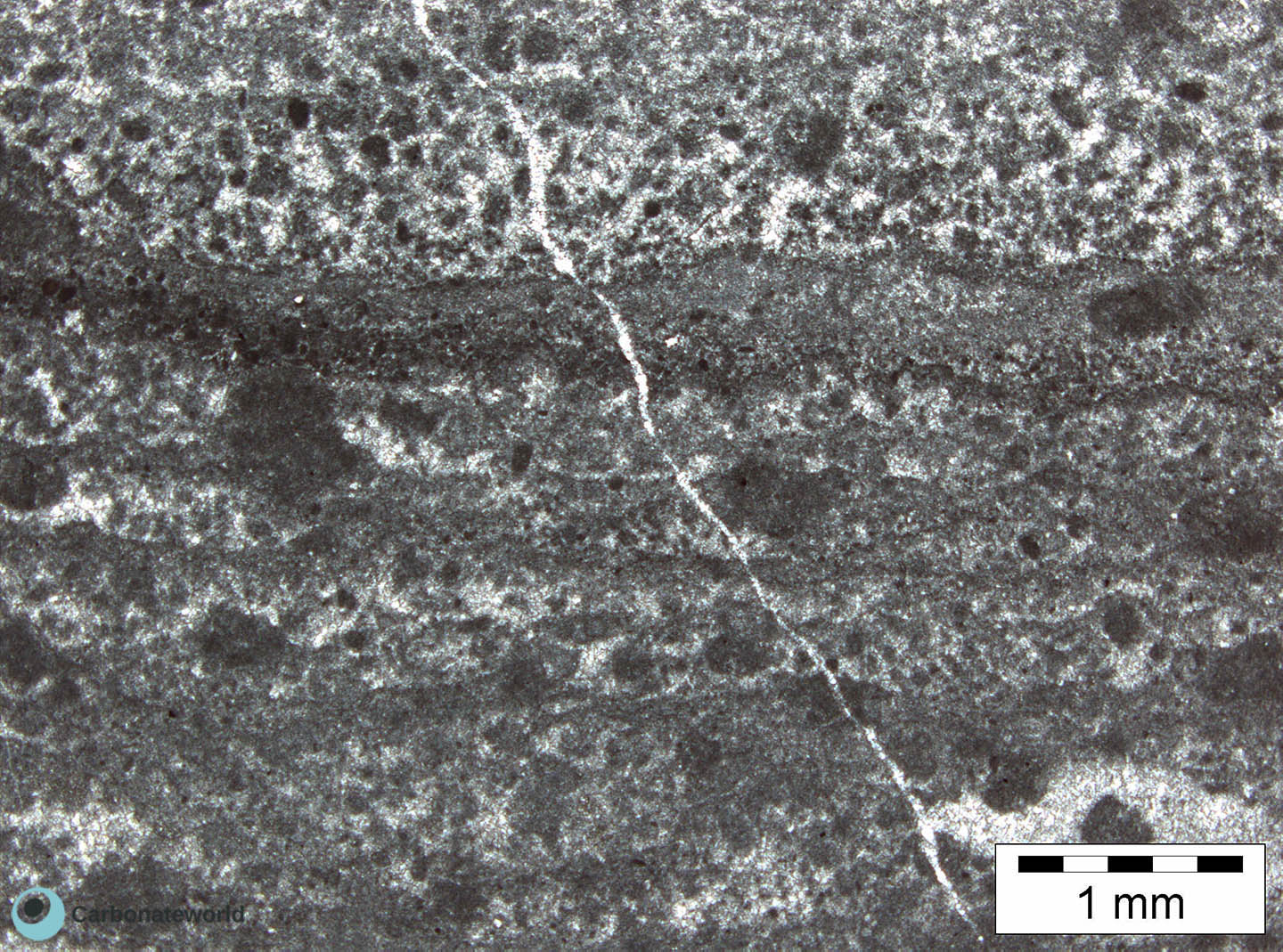
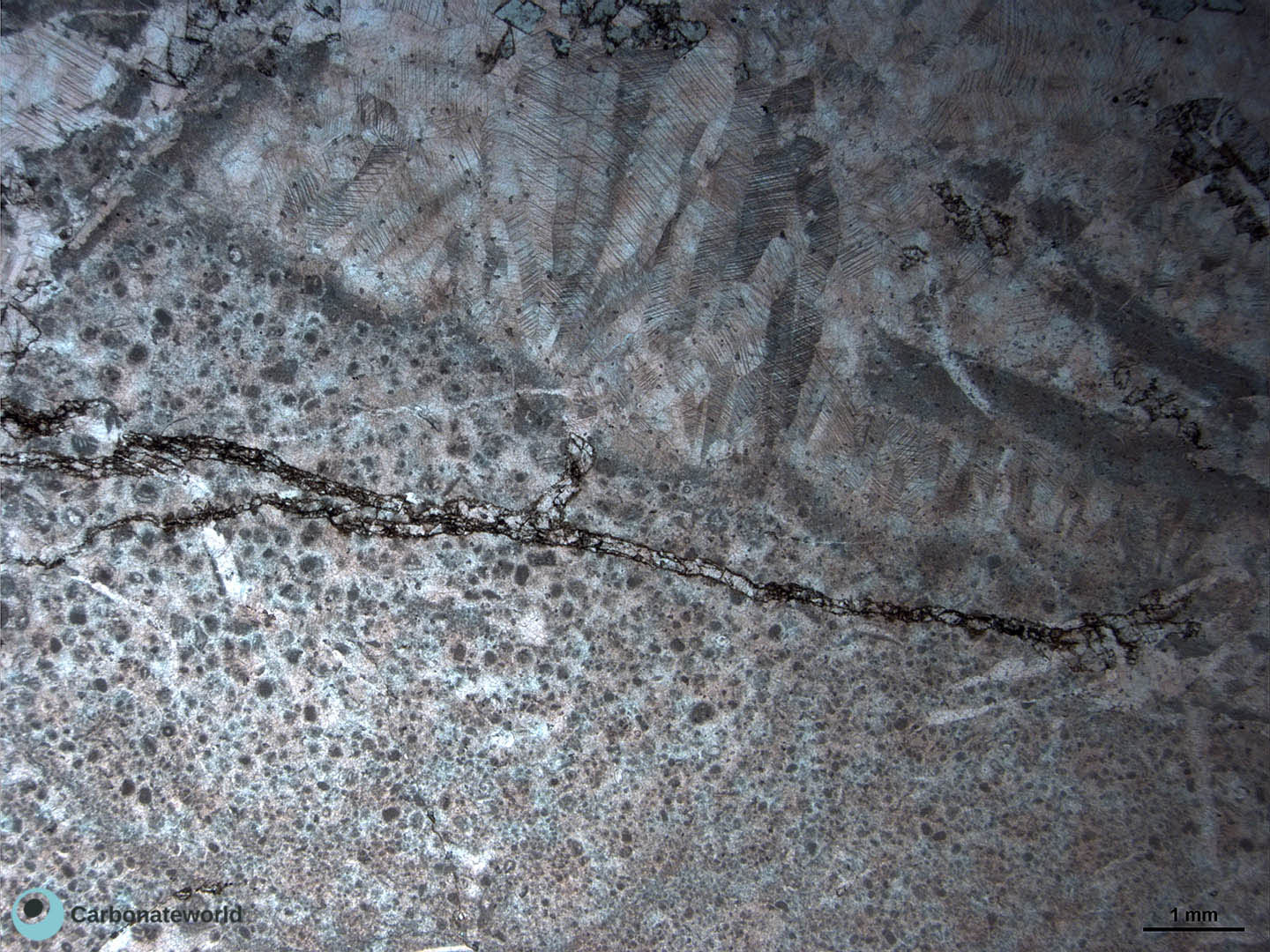

Clotted peloidal micrite

Radiaxial fibrous cement
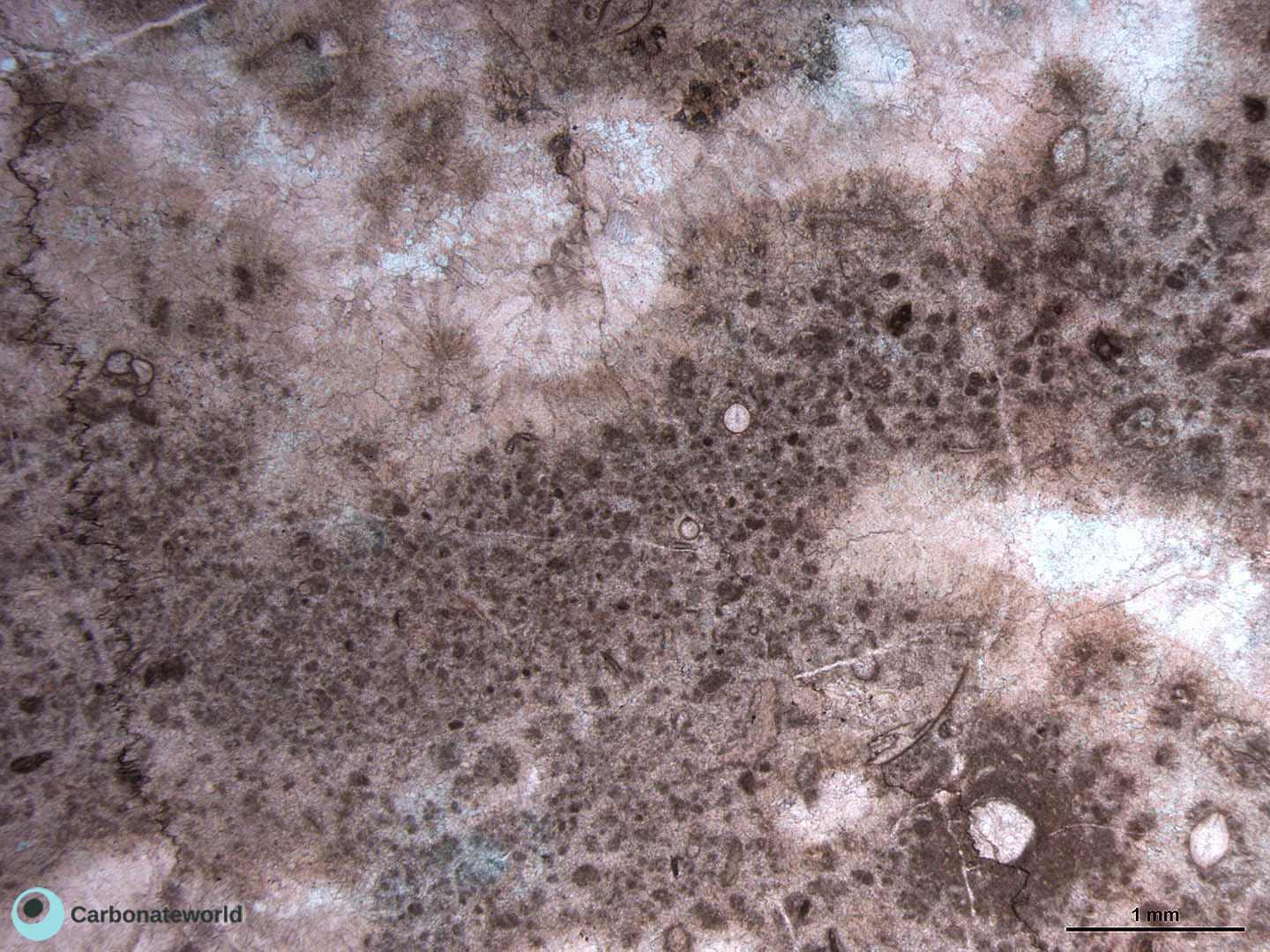

Clotted peloidal micrite

Radial fibrous cement
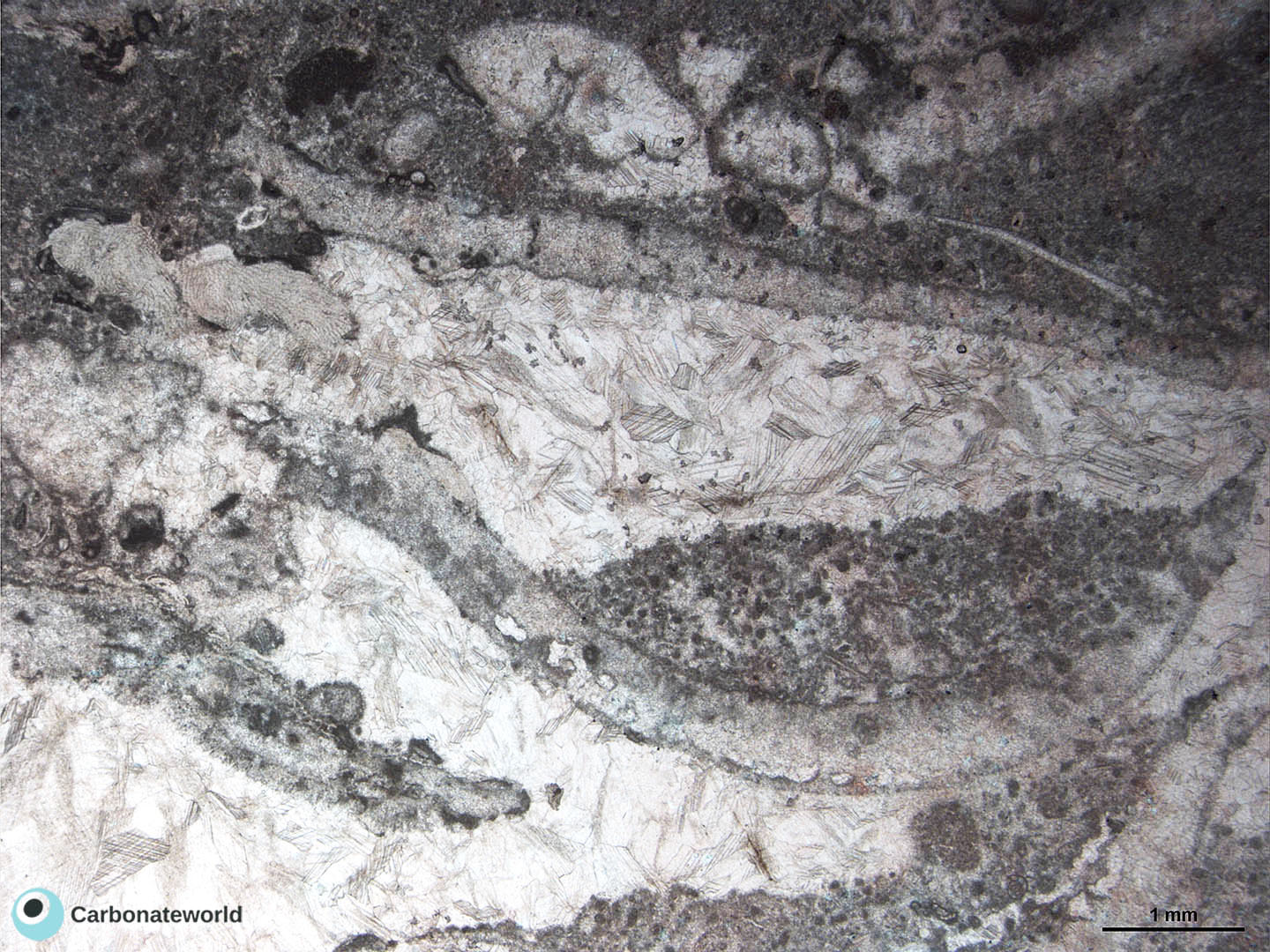

Phylloid algae

Clotted peloidal micrite
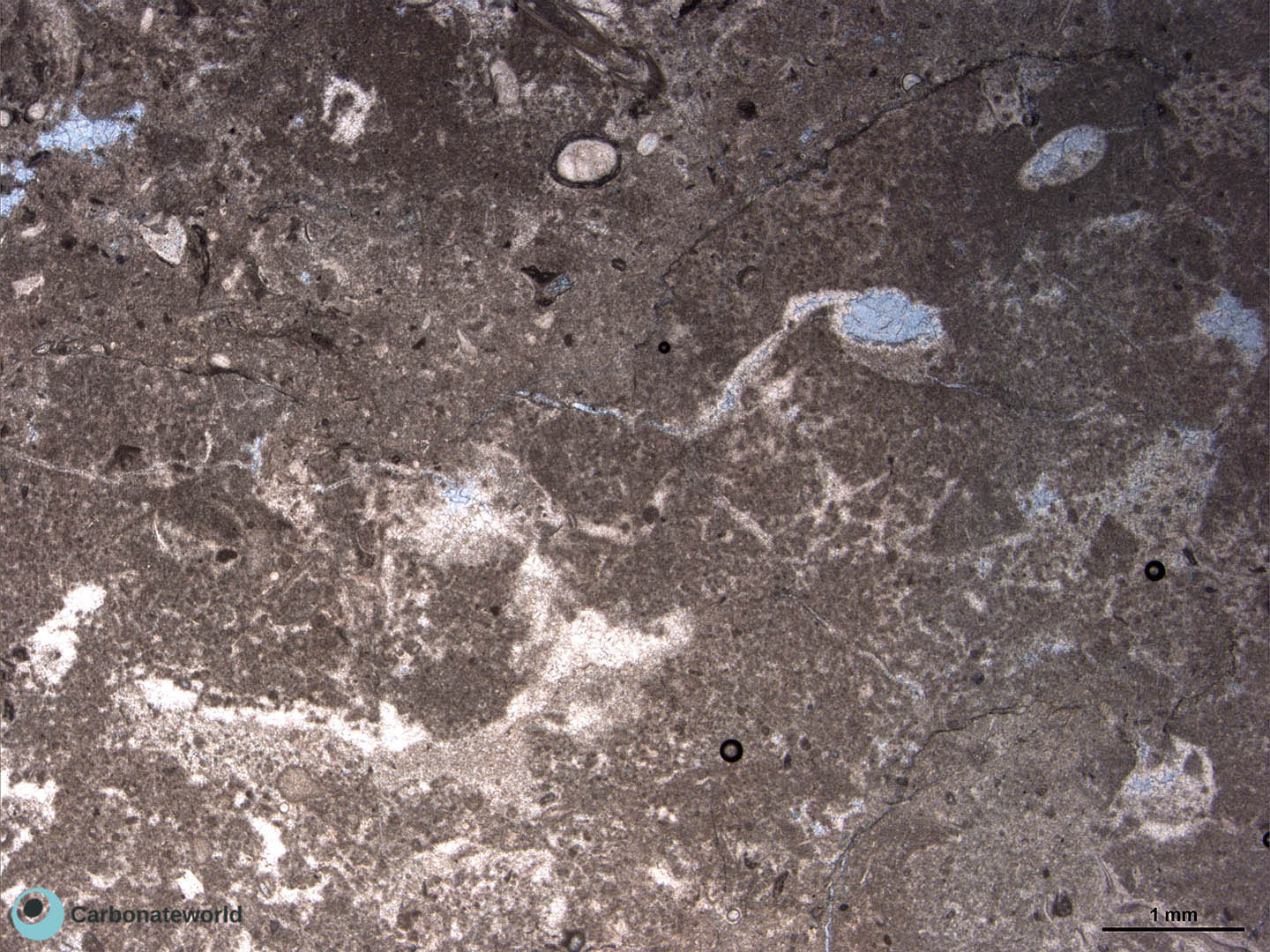

Clotted peloidal micrite

Fenestellid bryozoan
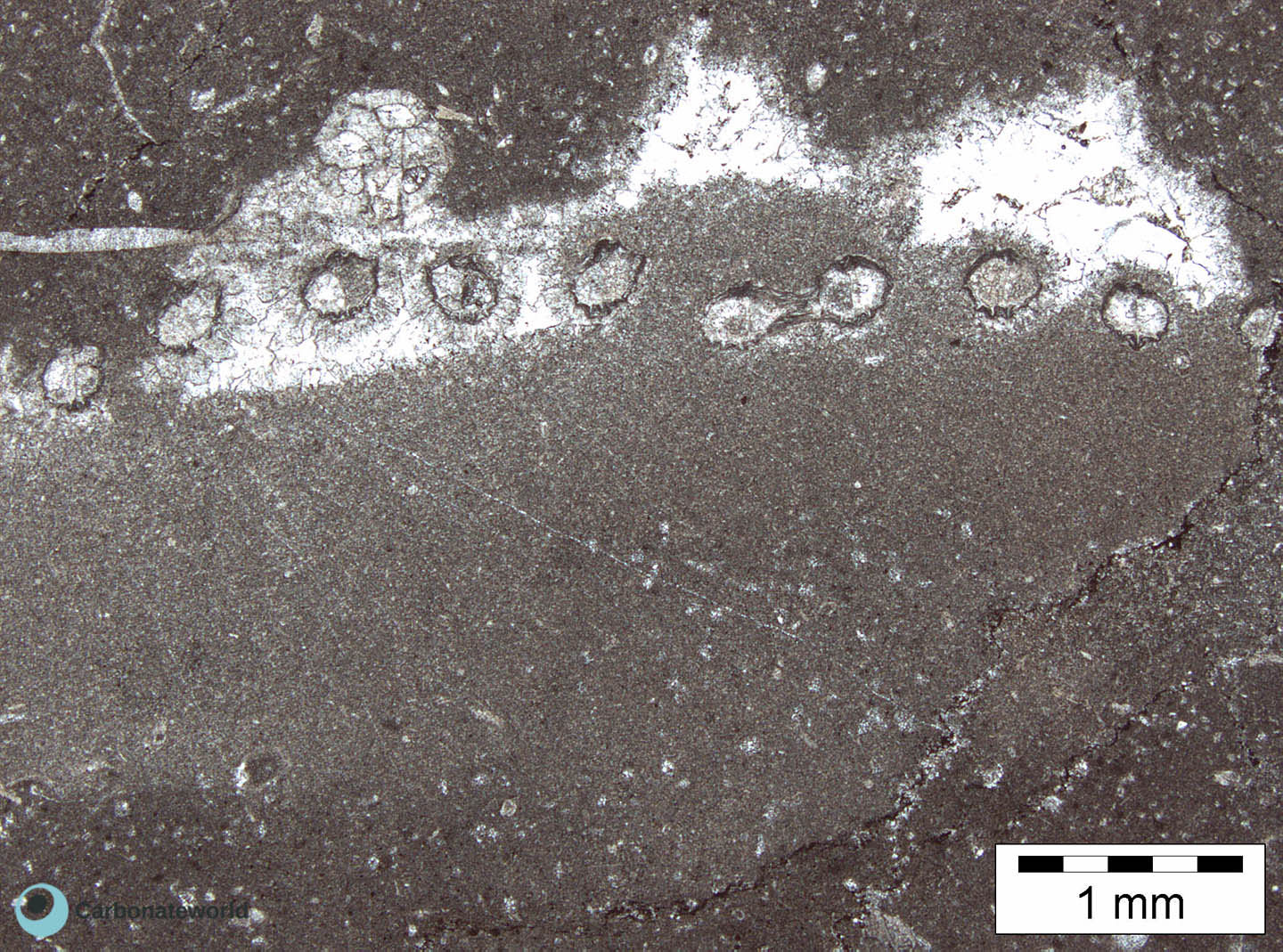

Structureless automicrite

Fenestellid bryozoan
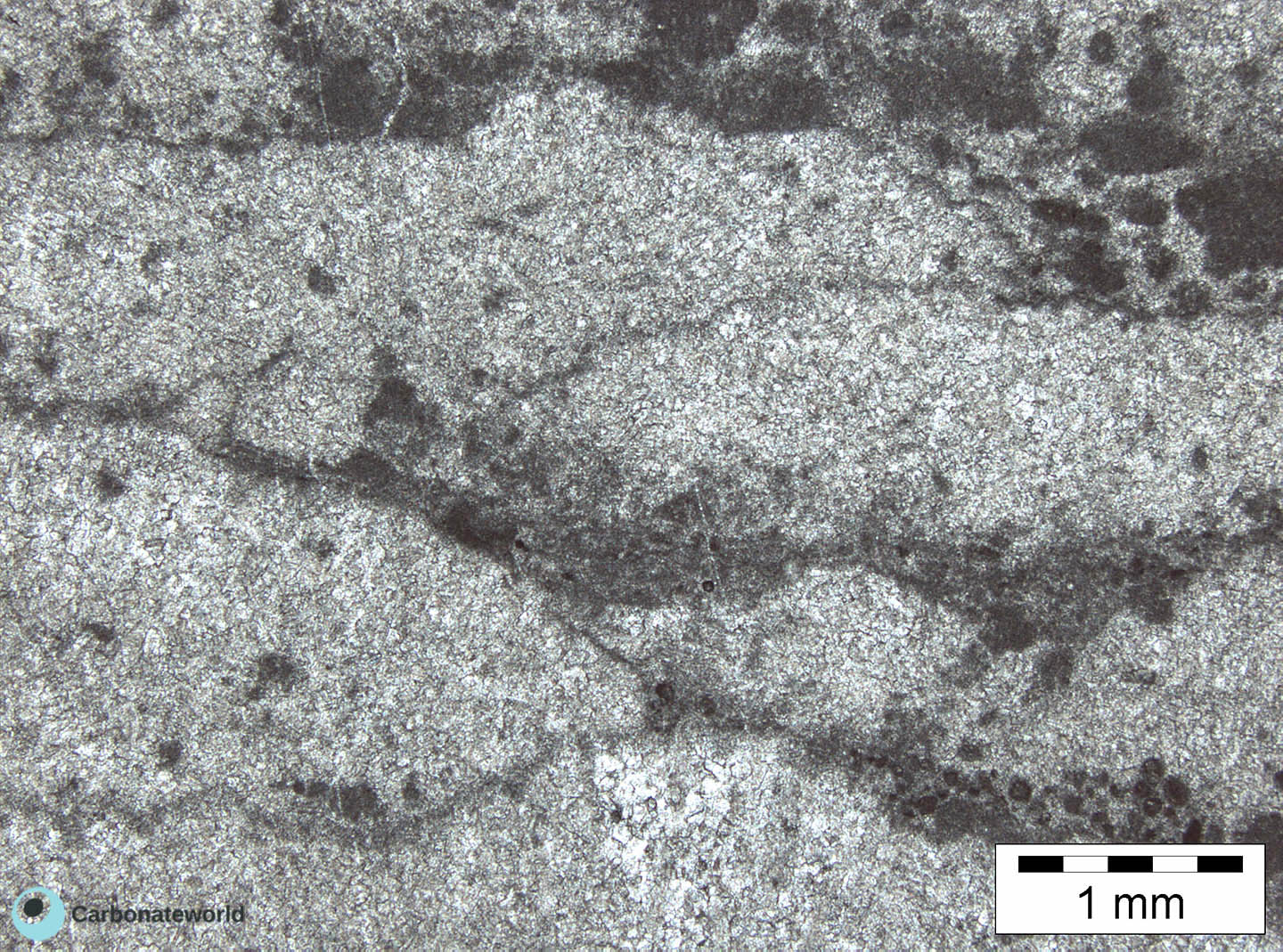

Former botryoidal aragonite

Peloidal micrite
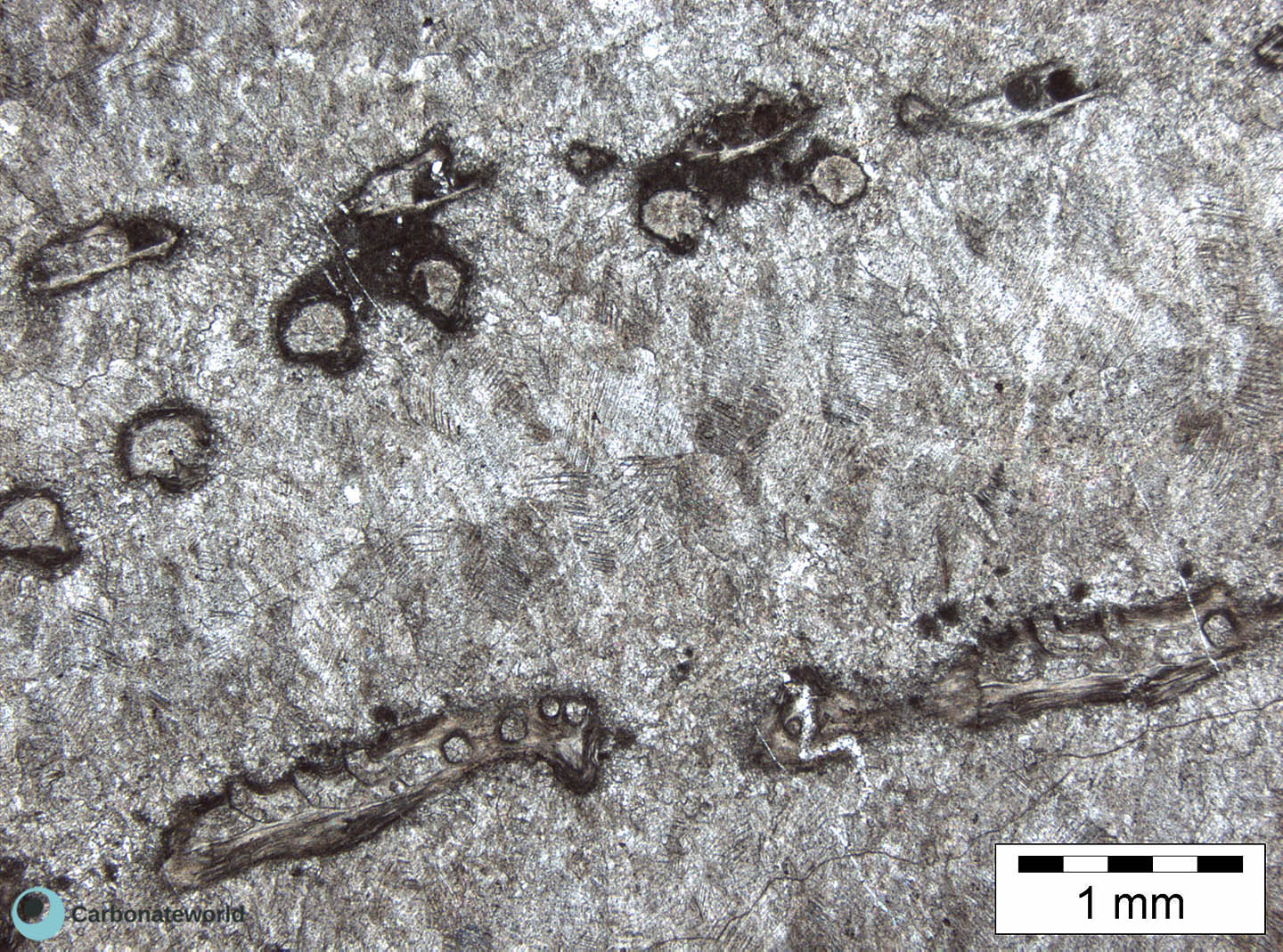

Bryozoan

Radiaxial fibrous cement